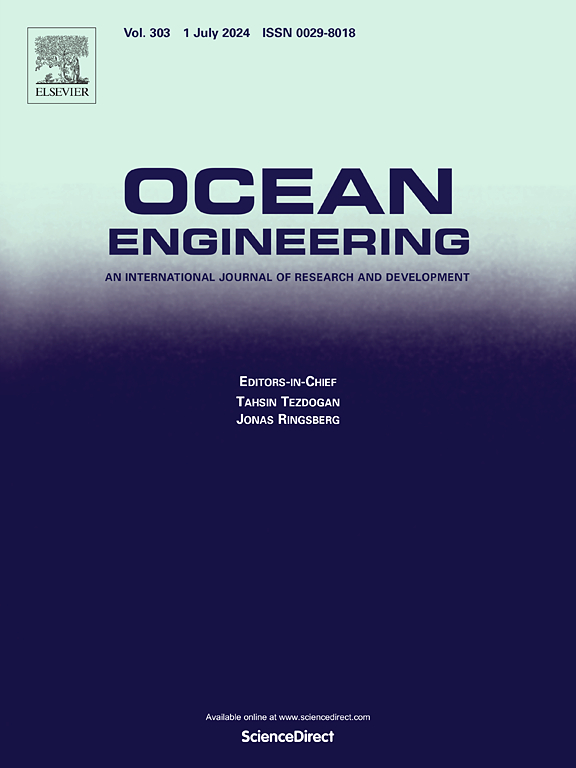基于波浪能变换器的海上风力发电机超低频双质量摆振器的振动控制
IF 5.5
2区 工程技术
Q1 ENGINEERING, CIVIL
引用次数: 0
摘要
单摆调谐质量阻尼器(SPTMD)通常需要很长的摆长来实现低频结构的最优振动控制,因此需要很大的安装空间。受波能转换器(WECs)中新兴的双质量摆(DMP)振荡器的启发,本研究首次探索了使用DMP阻尼器(DMPD)进行低频振动控制的可行性,并提高了空间效率。导出了解析最优DMPD设计参数。除了频率调谐和阻尼比外,摆长比也影响控制能力。通过风浪荷载作用下海上风力机的数值算例,验证了DMPD控制的有效性。在OWT应用中,DMPD实现了与SPTMD相当的控制性能,但空间效率更高,安装空间减少了19%(或更高),从而加强了安装在OWT机舱内的可行性。还讨论了使用DMPD的实际理由。该装置的控制能力和空间效率之间的权衡需要根据特定的空间限制进行仔细的设计。尽管存在潜在的失谐问题,但用于WECs的DMP振荡器的原始设计提供了频率和阻尼可调性。结果表明,DMPD有望成为低频结构的一种可选调谐型振动控制装置,特别是那些安装空间有限的结构(如owt)。本文章由计算机程序翻译,如有差异,请以英文原文为准。

Wave energy converter-inspired ultra-low-frequency double-mass pendulum damper for vibration control of offshore wind turbines
The simple pendulum tuned mass damper (SPTMD) often requires impractically long pendulum lengths to achieve optimal vibration control of low-frequency structures, thus demanding significant installation space. Inspired by the emerging double-mass pendulum (DMP) oscillators in wave energy converters (WECs), this study, for the first time, explores the feasibility of using a DMP damper (DMPD) for low-frequency vibration control with enhanced spatial efficiency. The analytical optimal DMPD design parameters are derived. In addition to frequency tuning and damping ratios, the pendulum length ratio influences the control capacity. The DMPD control effectiveness is validated through a numerical case study of offshore wind turbines (OWTs) under wind-wave loads. In OWT applications, the DMPD realizes a control performance comparable to that of an SPTMD but offers higher spatial efficiency with 19 % (or higher) less installation space, thereby reinforcing its feasibility for installation within the OWT nacelle. Practical justifications for the use of the DMPD are also discussed. The trade-off between the control capacity and spatial efficiency of this device necessitates a careful design based on specific space constraints. Despite potential detuning issues, the original design of the DMP oscillator for WECs offers frequency and damping tunability. The results demonstrate the DMPD's promise as an alternative tuned-type vibration control device for low-frequency structures, particularly those with limited installation space (such as OWTs).
求助全文
通过发布文献求助,成功后即可免费获取论文全文。
去求助
来源期刊

Ocean Engineering
工程技术-工程:大洋
CiteScore
7.30
自引率
34.00%
发文量
2379
审稿时长
8.1 months
期刊介绍:
Ocean Engineering provides a medium for the publication of original research and development work in the field of ocean engineering. Ocean Engineering seeks papers in the following topics.
 求助内容:
求助内容: 应助结果提醒方式:
应助结果提醒方式:


